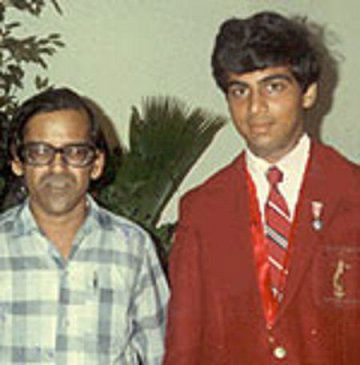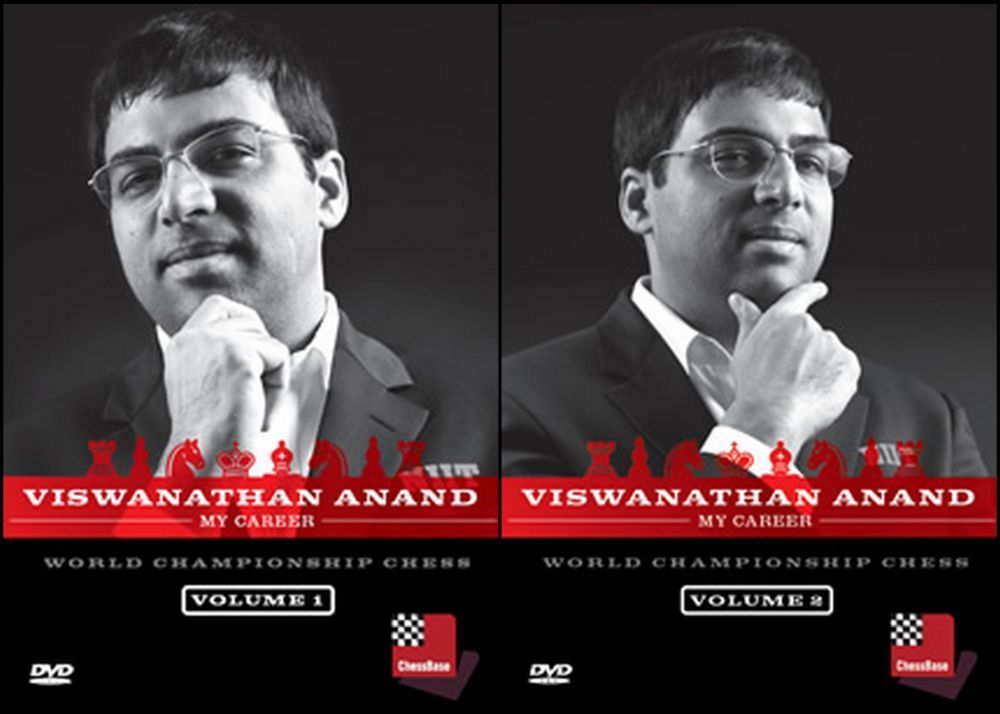The Making of Viswanathan Anand - 1
Think of an F1 race with the world's best drivers driving their mean machines — Ferraris, Renaults, Mercedes, etc. Imagine they are all standing ready to start the race and in the corner, there is a young bespectacled lad sitting on his... Maruti Suzuki! What chance does the Maruti have of winning against the bigger machines? Almost zero, right? Well, the amazing thing about this story is that the lad in the Maruti won. He was Viswanathan Anand. Let us celebrate his birthday by looking at where it all started and understand his mother's role in Vishy's development.
The Making of Viswanathan Anand - 1
Madras, 1981
The club resembles a room full of people on a television screen, with the volume turned mute. Most are huddled around a single table, papers and pads in their hands, scribbling down illegible characters resembling something like algebra. The heat of Madras is at its trademark best — not extreme but continuous. On the table is a chess board with a dilapidated clock next to it, keeping an eye on the black and white pieces in the game.
The white player is known for his speed and tactical acumen. He has a small frame, but at the board, he is as frightening as a tiger on the loose.
The black player bangs the moves with great accuracy. However, the punches do not even cause the lad to blink. He grins at his opponent and keeps clawing ahead.

To think that a country like India in the 1980s could throw up a serious contender to the World Chess Championship crown was farfetched. Living in the current times it appears incredible to know that once upon a time, chess in India was just a niche sport. However, it doesn’t remain so. A single chess tournament has at times more than 600 players competing. Today, it is a sport played by the masses in India, just like cricket, only not as rich.
The catalyst of this change was Viswanathan Anand.
The Beginning

Vishy Anand was born on 11th December 1969 in the town of Mayiladuthurai in Tamil Nadu, India, to K. Viswanathan, a general manager of Southern Railways, and Susheela, who herself is a chess aficionado. After he was born, his family moved to Chennai, then known as Madras, where young Anand picked up the game from his mother when he was six years old.

He took his first steps in the world of chess at the Tal Chess Club, which was established in Chennai by the Russian Cultural Centre in 1972. Growing up in such a thrilling environment as described before, where lightning speed and a quick eye for tactics ruled the day and play, the cub from Madras sharpened his claws and teeth, those claws and teeth which would one day make the strongest names in the chess world run for cover.
The cub learns to hunt…
In 1978, K. Viswanathan, who was the chief mechanical engineer at the Southern Railways, was asked to take a posting in Manila, Philippines, as part of a work assignment. Consequently, he moved there with his family. Anand’s mother was adamant that he maintain his sporting life there too, which made her take little Anand to tennis and chess camps.
Due to the 1978 World Championships between Anatoly Karpov and Viktor Korchnoi, the Philippines were witnessing an unprecedented chess boom. Anand and his parents arrived a month after the World Championships had finished. Although he had missed the World Championship match, his parents did take him to Baguio City, to the resort where the match had been held. They visited the playing hall where Korchnoi had taken on Karpov’s might but failed to beat him. Subconsciously, Anand might have taken a liking for that place. Years later, it was in that very same hall that he created history by winning the World Juniors Championship.
A key part of his development lay in a TV program Anand used to watch with his mother in the Philippines. It was called Chess Today where games of leading players would be analyzed. This was a vital building block for Anand who had no access to the coaching of the highest standards. At the end of the program, the presenter would give a challenge to the viewers to solve a chess position that Anand would gleefully work on. However, there was one recurring problem — Anand would still be in school when the show would be aired. Anand’s mother found a solution.
She would note every position down, at times even managing to tape the episodes. As soon as Anand returned from school, he would complete his homework and be ready to savour his daily dose of chess. He would use a small chess board, the only size he had, and go through the games, studying the moves, with his mother explaining the notes. His favourite pastime was, of course, the puzzle, which he would solve with utmost interest.
Anand used to solve these puzzles daily, and his mother would mail the answer to the TV station. This routine made Anand go from a talented young boy to the feared tactician he became. The cub was indeed learning to hunt! The winner on the TV show would be the one who got all the details correct, and his/her name would be announced in the very next episode and he/she would be given a chess book as a prize. Anand built up a sizeable collection of chess books in this manner. He won so regularly that the TV station was fed up with him: they called Anand to their library and asked him to pick up whatever book he wanted, but to stop sending the answers so that others could get a chance!
Back where he belongs...


In 1980, Anand returned to Madras, and from then on, he started playing chess tournaments basically every weekend. Of course, the Tal Chess Club was the haunt where Anand steadily built his legend. Every Monday evening, Thursday evening, second Saturdays and Sundays, whenever the Club was open, Anand would go there and play blitz chess, five minutes each on the clock, and defeated all comers. He would at times play through the evening until night staying undefeated.

Tamil Nadu was basically hailed as a seat of learning in chess, and there were tournaments all around the state. To this date, it remains the central chess province of India. Over the years, Anand competed in many of those tourneys, developing his skills as a player.
Like a young tiger, he lurked in the shadows, waiting to pounce on his moment. However, it was not until 1983 that Anand got his first major breakthrough.
The second part will follow soon...

Special thanks to IA V. Kameswaran for sharing the valuable pictures and newspaper cuttings. Mr. Kameswaran is the first International Arbiter from India and has acted as the official coach for young Indian players in their tours abroad, including Viswanathan Anand. He is also a reputable chess journalist.

Viswanathan Anand: My Career is an in-depth look by the five-time world champion at his own career where he analyzes in detail the notable games and narrates stories. You can buy the DVDs for Rs. 999/- each or you can get both the DVDs for just Rs. 1799/-!
For example, have a look at this fantastic demolition of Michael Adams where Anand backs up his analysis with stories surrounding the game and other tidbits:
Hours of unparalleled chess entertainment with the 15th World Champion! What better way to celebrate his birthday?
Order your copy of Vishy Anand: My Career here!
